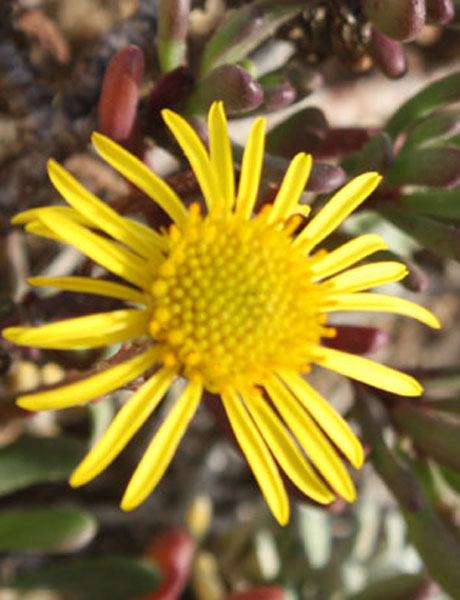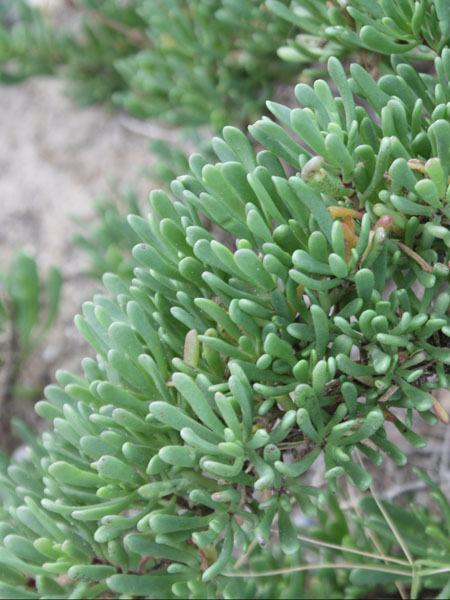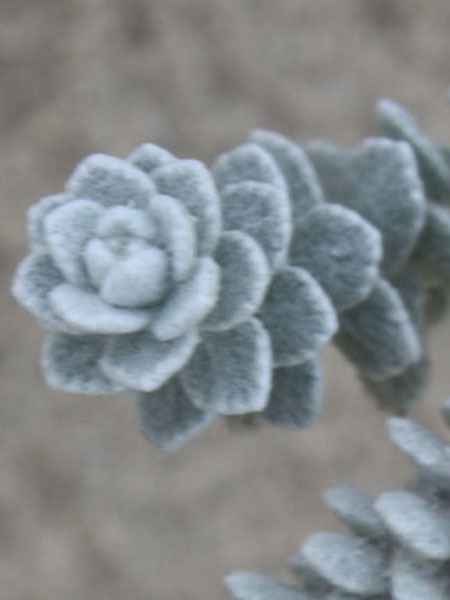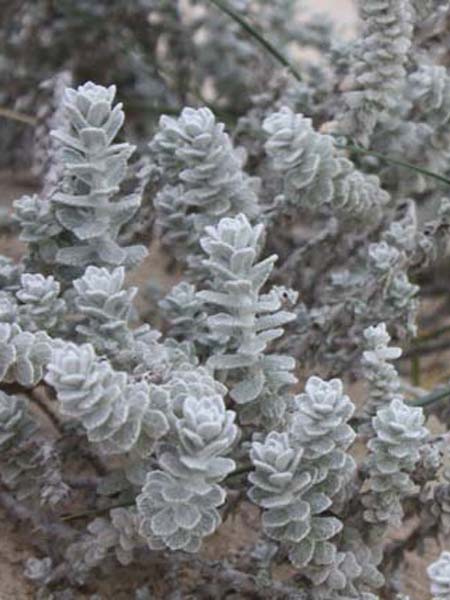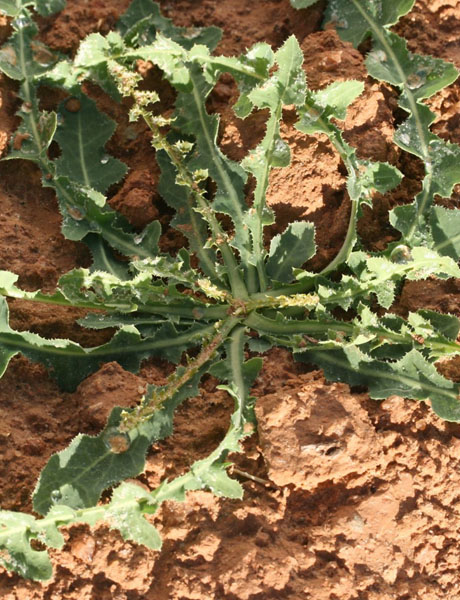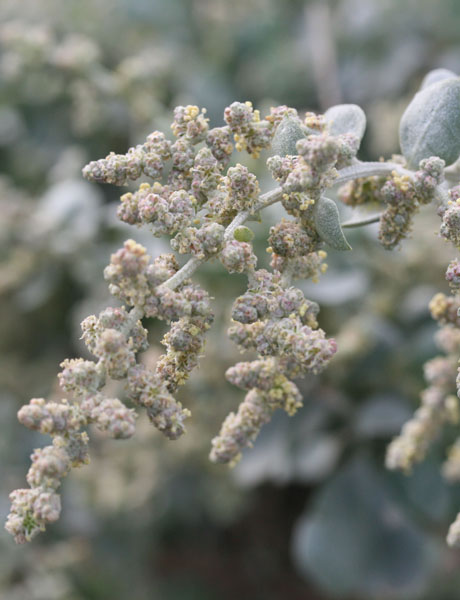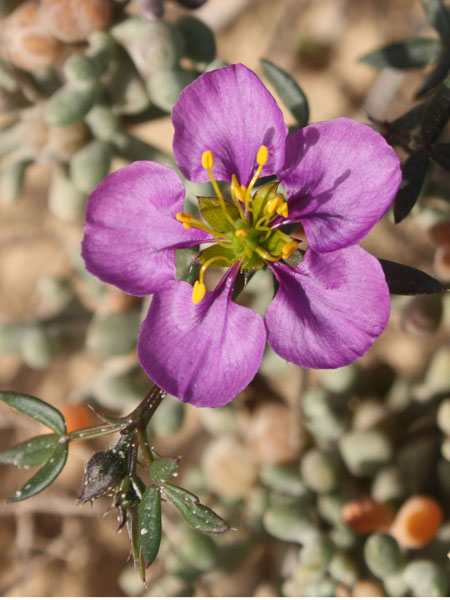Launaea fragilis
Kingdom : Plantae / النّباتات
Division : Spermaphyta / البذريات
Clade : Magnoliophyta or Angiospermae / مستورات البذور
Class : Eudicotyledoneae / ذات الفلقتين
Order : Asterales / رتبة النّجميات
Family : Asteraceae [Compositae] / الفصيلة النجميّة أو المركّبة
Genus : Launaea
species : fragilis
Chromosomes: 2n=16
Protologue
(Asso) Pau, Bol. Soc. Aragonesa Ci. Nat. 16: 68 (1917)
Synonyms
Lactuca fragilis Asso, Syn. Stirp. Aragon 109 (1779).
Sonchus chondrilloides Desf., Fl. Atlant. 2: 226 (1799).
Zollikoferia tenuiloba Boiss., Diagn. Pl. Orient., ser. 2, 11: 50 (1849).
Launaea resedifolia sensu auct. mult
Common names
Tunisia Arabic English French Tamazight
غديدة
لونييَة نَحيلَة الفُصوص
سَليحَة الجِمال
Launée fragile
Toxic
no
Edible
yes
Latex
yes
Botanic description
Genus description
"Homogamous capitula, with yellow flowers ligulate hermaphrodite. Cylindrical gold camped with nested bracts, usually membranous at the edges. Naked receptacle. Akenes generally linear, prismatic or slightly compressed, with little or no attenuation at the top, with longitudinal fluted sides; peripherals often velvety pubescent or rough. White egret sessile, many bristles. Dichotomous plants, with glabrous leaves often whitish on the tips of the teeth and lobes.
Species description
"Plant colonizing sands with long, hypogeous stolons. Variable port.
Stems rowers and dichotomes Leaves pennatiparts, with linear or lanceolate lobes Flowers composed, yellow. Corolla ligulate Inflorescence capitula ovoid or cylindrical elongated. Fruits achenes 4 to 7 mm long with egrets as long as them. Pappus dimorphic, white
Botanic References
Pottier-Alapetite G. (1981). Flore de la Tunisie Angiospermes –Dicotylédones (Gamopétales première partie). Imprimerie Officielle de la République Tunisienne (Eds), 1110 p. Edouard LE FLOC’H, Loutfy BOULOS et Errol VELA. (2010). Catalogue synonymique commenté de la FLORE DE TUNISIE. République Tunisienne, Ministère de l’Environnement et du développement durable, Banque Nationale de Gènes. 500 p www.theplantlist.org
Biology
Life form Annual or biennial Type form Therophyte Photosynthesis C3
Phenology
Blooming
JanuaryFebruaryMarchAprilMayJuneJulyAugustSeptemberOctoberNovemberDecember
Fruiting
JanuaryFebruaryMarchAprilMayJuneJulyAugustSeptemberOctoberNovemberDecember
Map Localization
Ecology
Adaptation Plant of salty sands and arid places. Not to be confused with L. nudicaulis. Salt bladder yes Invasive no
Geographical distribution
Localization Biocimatic stage Annuel pluviometry (mm) GPS Djerba (Gellala, Déc. 2013) Higher arid 209 33°43'25.79"N /10°51'34.26"E
General uses
It is used as an insecticide.
Medicinal uses
"The genus Launaea is used to treat acid stomach, skin diseases, as an antitumor species .
NOTE : This website is not that of herbal medicine and assumes no responsibility for the negative effects of the use of plants. Seek advice from a professional before using a medicinal plant.
Systems / Organs / Effects
Digestive System Anti-cancer Liver Skin
Dispersion mode
- Anemochory (wind)
Germination
Duration
Image
Description of the seeds
Form External structure Ornamentation Type of seed Average length of 10 seeds ± (mm) Average width of 10 seeds ± (mm) Average thickness of 10 seeds ± (mm) Average mass of 100 seeds (g)
Tunisian references
Chaieb M et Boukhris M. (1998). Flore succincte et illustrée des zones arides et sahariennes de Tunisie. Association pour la protection de la nature et de l’environnement, Sfax. 132 p.
Other references
Abd-el-Fattah H, Zaghloul AM, Halim AF, Waight ES. (1990). Steroid and triterpenoid constituents of Launaea resedifolia (L.) Kuntze. Egypt. J. Pharm. Sci.; 31: 81-91 Abdu Raazag Auzi , Najat T, Hawisa M, Sherif F, Atyajit D Sarker. (2007). Neuropharmacological properties of Launaea resedifolia. Braz J Phamacognosy 17(2):160–165. Ashraf AE, Nabil AA (2006) Antibacterial coumarins isolated from Launaea resedifolia. Chem Plant Raw Mater 1:65–68 Moussaoui F, Zellagui A, Segueni N, Touil A and Rhouati S. (2010). Flavonoid Constituents from Algerian Launaea resedifolia (O.K.) and Their Antimicrobial ActivityRec. Nat. Prod. 4:1 91-95. Rashid S, Ashraf M, Bibi S and Anjum R. (2000). Insecticidal and Cytotoxic Activities of Launaea Nudicaulis (Roxb.) and Launaea Resedifolia (Linn.). Pakistan J. of Biol. Sc. 3(5), 08-809. Saleh MRI, Habib AAM, Al-Ghazooly MG, Ghabar DMK and Al-Fik FK. (1988). Chemical constituents from Launaea resedifolia. Egypt. J. Pharm. Sci., 29: 507-513.








